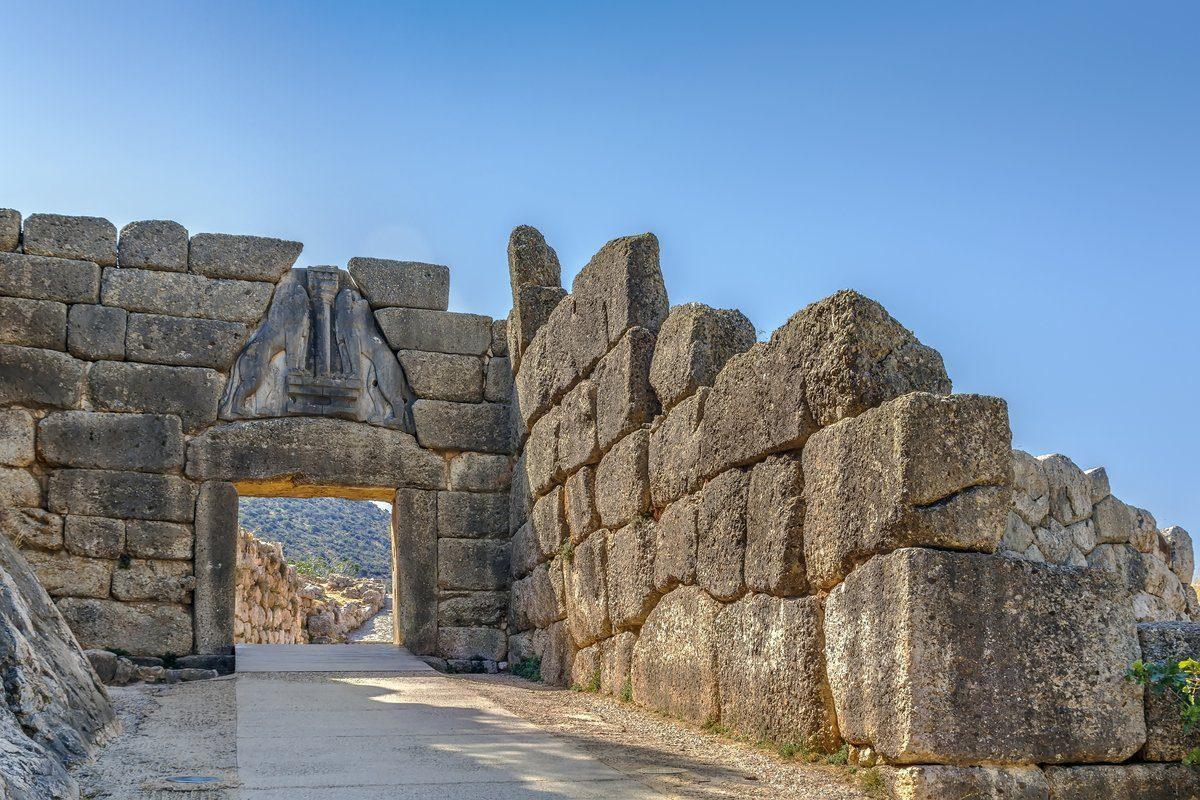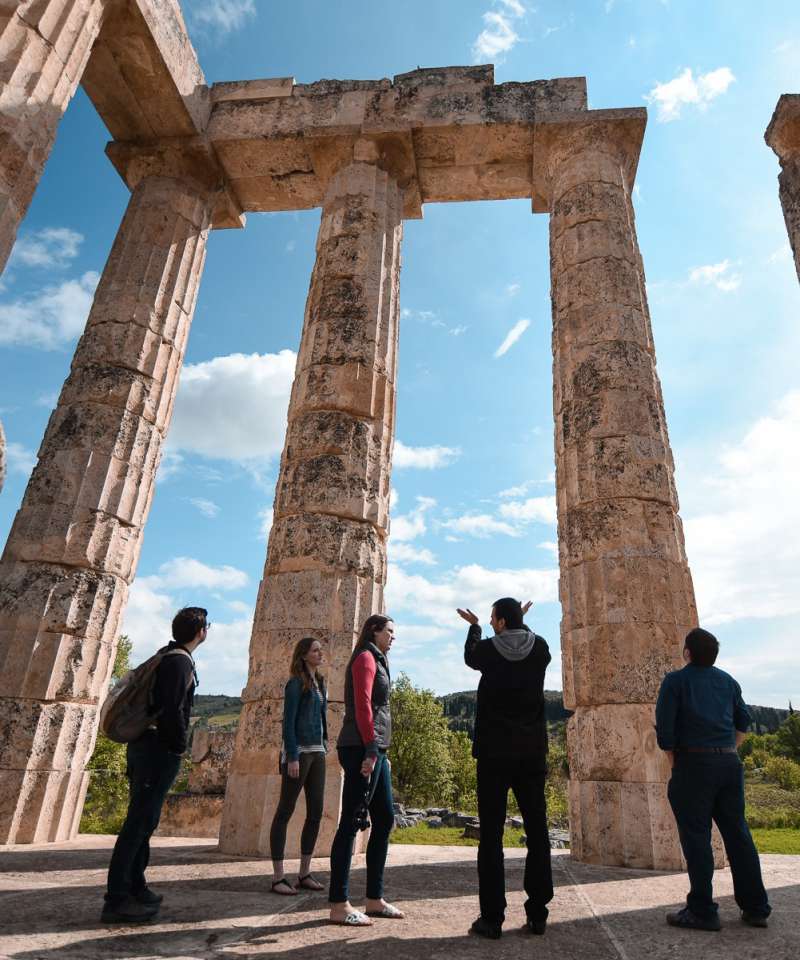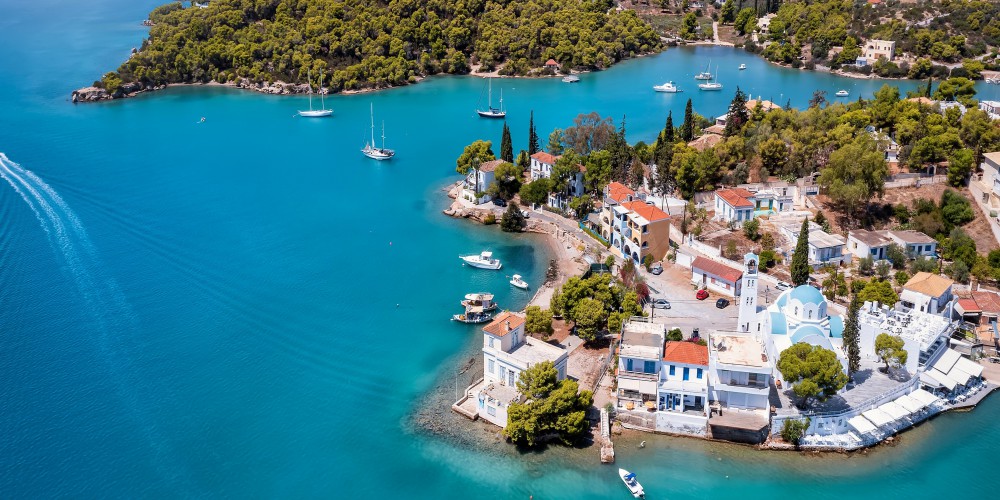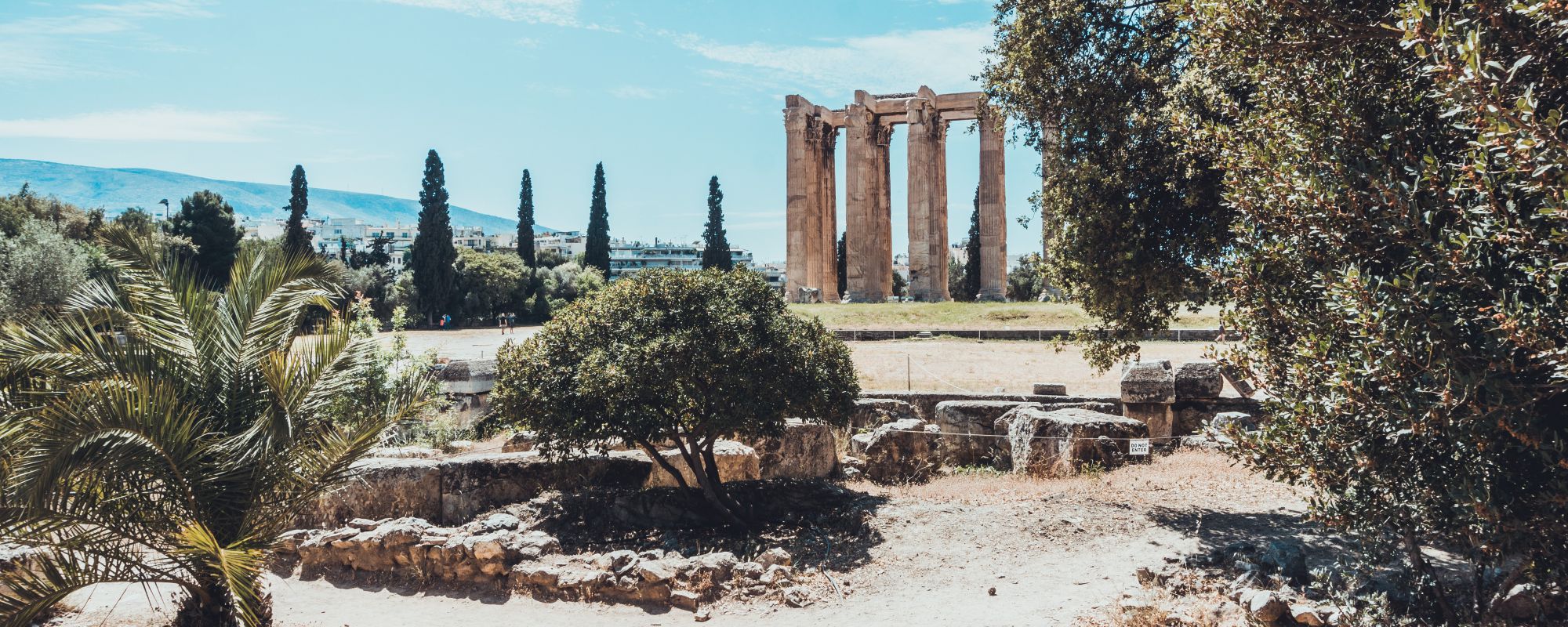
An Introduction to Olympia; a Small Town with a Vast History
Key Takeaways
- Olympia was the site of the ancient Olympic Games, which were held every four years from 776 BCE to 393 CE.
- The archaeological site of Olympia contains a sacred precinct dedicated to the worship of the gods.
- Olympia, including the archaeological site and associated structures, has been recognized as a UNESCO World Heritage Site since 1989.
- Today, the Olympic flame is lit in Olympia using a parabolic mirror, symbolizing the continuity between the ancient and modern Olympic Games.
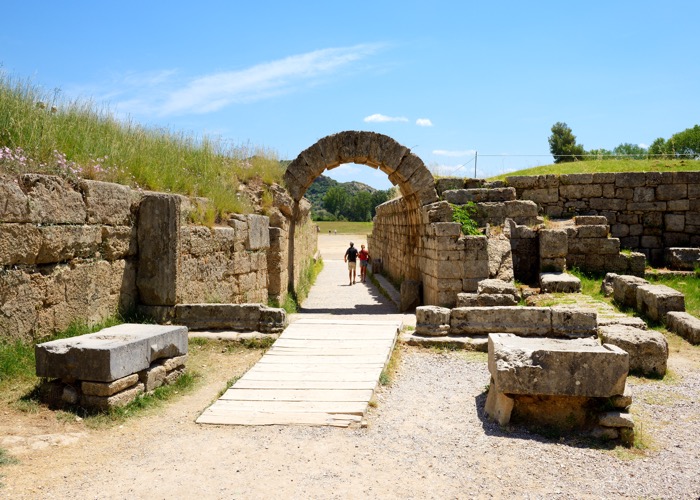 Olympia - credits: slava296/Shutterstock.com
Olympia - credits: slava296/Shutterstock.com
'On nothing does Heaven bestow more care than Olympia,' said Pausanias, the famous ancient Greek geographer and traveler of the 2nd century AD! Follow us on a trip to ancient Olympia and learn why this corner of Greece was and still is the cradle of western civilization.
At the meeting point of the two sacred rivers of Alfeios and Kladeos in the prefecture of Ilia in Peloponnese lies the Panhellenic sanctuary of Olympia, according to some, the most important site of the ancient Greek world, and a sacred grove of worship.
Always considered to be a place of worship, the archaeological site of Olympia was an active and vibrant sanctuary since the 10th century BC and continued to be inhabited until the late 7th century AD.
By being the birthplace of the Olympic Games, a festival dedicated to the worship of the Greek god Zeus, Olympia was the every-4-years meeting point of every Greek around the world.
During the time of the ancient Olympic Games, they cast aside their differences, seized their warfare and feuds, and were united under the protection of their father deity.
But how important were these games for the mentality of those ancient people? The best way for us to understand it is through the various myths and events that happened there throughout the centuries and, of course, through the words of Pausanias, that visited Olympia during the 2nd century AD.
The founding myths of the Olympic games
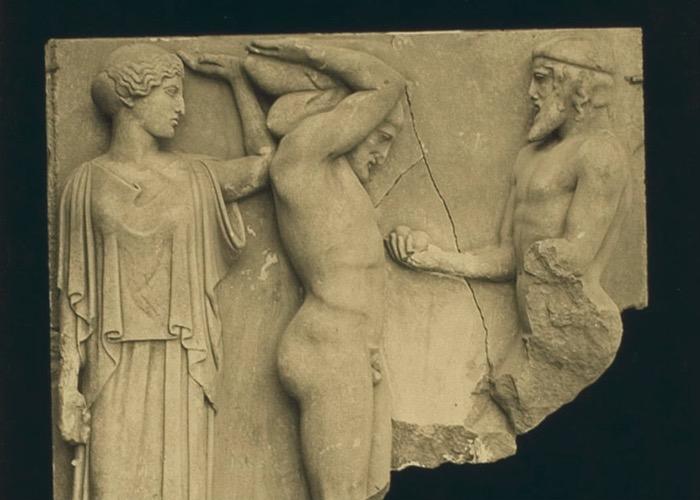
As mentioned before, the ancient Olympic Games were held every 4 years, honoring the king of the gods, Zeus. According to Pausanias, there was an ancient Greek myth that claimed that the ancient inhabitants of Ilia already had a temple at the site dedicated to Cronus (Saturn) and held a festival for him.
After the birth of Zeus, the Dactyl demons Hercules (not the son of Zeus), Aeonius, Epimedes, Jasius, and Idas instigated a race honoring the birth of the divine infant.
After the race, they were crowned with wreaths of a wild olive tree that Hercules supposedly brought from the lands of Hyperborea. This tree came to be the parent tree of the sacred olive grove of Olympia.
Another myth, mentioned by Pindar, says that the first Olympic Games were held by Hercules, the son of Zeus, after the completion of his Labours to honor his father. The one myth, though, that is closely related to not a god but a local hero is the one of Pelops.
According to the myth, Pelops, the son of Tantalus, fell in love with Oenomaus' daughter, Hippodamia. Oenomaus challenged Pelops in a chariot race from the temple of Zeus in Olympia to the temple of Poseidon in Isthmia.
If Pelops were the winner, he could have Hippodamia as his wife. Pelops sabotaged the chariot of Oenomaus, or according to other versions of the myth, Poseidon himself helped him to win the race.
During the race, Oenomaus was killed, and Pelops came to be the king of the area. This couple -Pelops and Hippodamia- were considered the forefathers of all Greeks, therefore, the event was depicted at the eastern pediment of the temple of Zeus.
The Olympic Truce
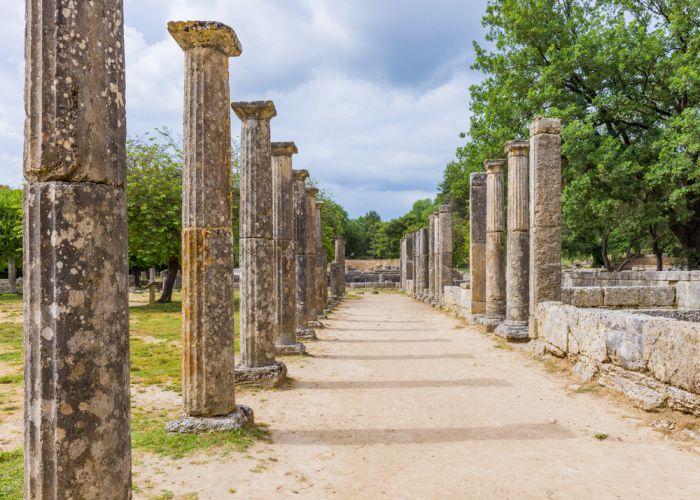
The Olympic Games were a cornerstone of ancient Greek culture and all the sports structures. They were so important that even the ancient calendar was divided accordingly to the dates on which the Olympic games took place.
Participating in the games was one of the highest honors a man could ever live for, and being the winner was as close to immortality as a man could get.
Hence, the athletes coming from different city-states quickly came to be their official representatives and, therefore, a great opportunity for each city-state to declare to the rest of the Greeks their superiority.
At some point, the glory of the Olympic winners was so high that when winners were returning to their hometowns, the city's authorities were demolishing a part of their defensive walls for the winner to enter!
Such an important festival had to be held uneventfully, and for that reason, the Olympic Truce was established. Messengers were sent to every participant city-state announcing the beginning of the festival and the Games.
For the whole festival and seven days after its end, no warfare was allowed in all the Greek cities participating, and sacrifices were made to Zeus.
Peaceful and loyal competition was promoted. The violators of this truce were banned from the Games and were charged with a huge fine.
According to Thucydides, at one point, Spartans were banned from the Olympic Games for assaulting the city of Lepreum during the Truce; ancient Greeks were nothing if not fair!
Ancient Olympic Games: a male spectacle?
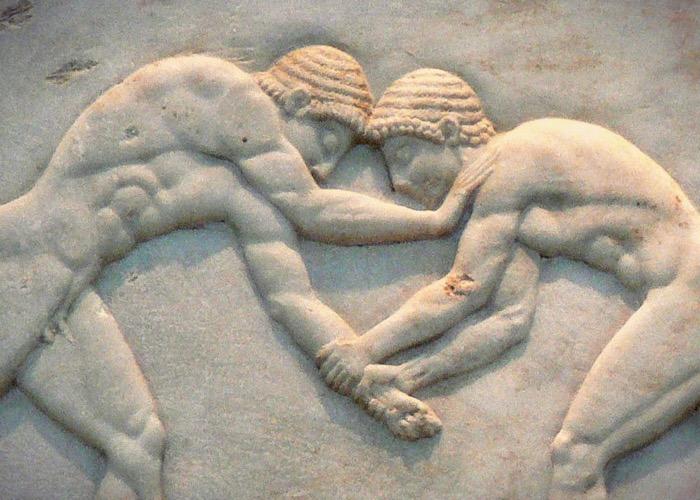
Ancient Olympic Games were a massive spectacle hosting Greeks and foreigners from every corner of the world. During some of the events, the athletes, who were free and equal men, were naked, allowing them to move freely.
Therefore, women were not allowed in those events, and the penalty for not obeying the rule was death. Pausanias, however, tells us the story of Kallipateira, a woman that defied this restriction.
Kallipateira was the daughter of the famous Olympic winner Diagoras and the mother of the wrestler Peisirrodus.
When her son participated in the Olympic Games, her sheer wish to see him on the grounds of Olympia led her to disguise herself as a man and find a seat among the spectators at the Stadium.
When Peisirrodus won, she screamed out of joy, giving away her disguise. She was arrested but luckily not executed because of her glorious ancestry of Olympic winners!
The decline of the Ancient Olympic Games
 Ancient Olympia - credits: elgreko/Shutterstock.com
Ancient Olympia - credits: elgreko/Shutterstock.com
With the conquest of Greece by the Romans, the decline of the Olympic Games began, which were finally abolished when the Byzantine emperor Theodosius forbade them to be held at the end of the 4th century AD. Olympia is abandoned after the abolition of the Olympic Games.
Gradually, over time, the stadiums, palaces, altars, and statues were buried under soil five to seven feet -or 5 to 7 m- deep.
They were buried there for over 1,300 years until the day when archeological excavations in 1875 brought to light again the largest and most important sanctuary of the sport of antiquity.
The revival and the establishment of the modern Olympic Games
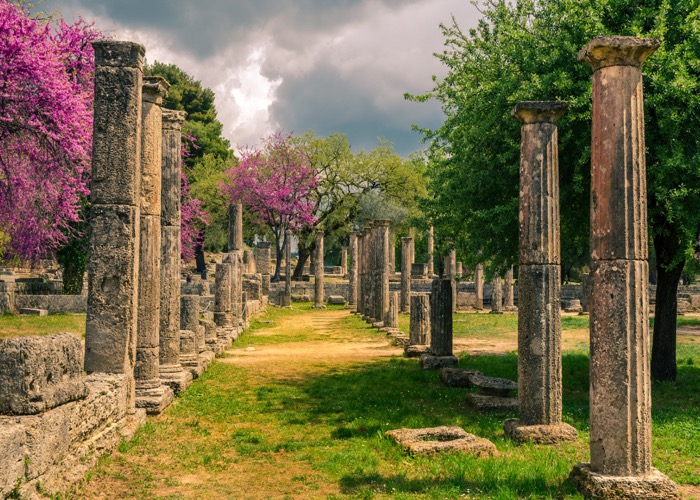 The archaeological site of Olympia - credits: Georgios Kritsotakis/Shutterstock.com
The archaeological site of Olympia - credits: Georgios Kritsotakis/Shutterstock.com
The end set by Theodosius was fortunately temporary. During the 19th century, there were four attempts to revive the ancient Olympic Games.
In 1859, Evangelos Zappas undertook, at his own expense, to make the first attempt to revive the institution. On October 18, with the presence of the royal family, the Olympics began. The international press awarded this initiative with several positive reviews.
Three more Zappeian Olympics were held, as they were named, in the years 1870, 1875, and 1889, which managed to significantly strengthen the will and the common interest of all for the revival of the Olympic Games.
On June 23, 1894, the reconstitution of the ancient institution was voted unanimously. In fact, everyone agreed that the first revival should take place in Athens, thus marking a new beginning in their homeland.
Thus, in 1896, the modern Games managed to gain international recognition and be permanently revived under the name of the Olympic Games.
They started on April 6, the day of Easter, in front of 100,000 spectators. 295 athletes from fifteen countries took part in the first Olympics. Some races, such as running, wrestling, long jump, and discus throw, have been retained from the old races.
But new sports were added, such as cycling, fencing, and shooting. The winner of the 42 km marathon was the Greek Spyros Louis.
The first modern Olympic Games were a great success. Although the number of athletes who took part did not exceed 300, it was the largest international sporting event ever held.
The Greek officials and the public were excited and asked to have a monopoly on the games.
However, the International Olympic Committee decided to hold each year in a different country, and the second Olympic Games were held in 1900 in Paris.
The archaeological site of Olympia and the Archaeological Museum
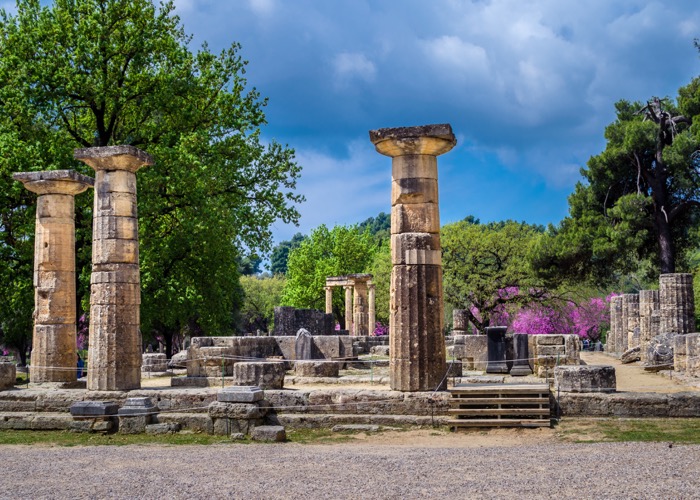 The archaeological site of Olympia - credits: Georgios Kritsotakis/Shutterstock.com
The archaeological site of Olympia - credits: Georgios Kritsotakis/Shutterstock.com
In the striking archaeological site of Olympia, which is a UNESCO World Heritage Site, you will find the restored 'Philippio,' dedicated by Philip II to Zeus after the victory at the battle of Chaeronia (338 BC), and is one of the most beautiful buildings in the archaeological site that survives today in the modern Greek world.
The mansion of Nero, built for the residence of the Roman emperor when he came to Olympia to compete and eventually be anointed an Olympian, and the Stoa of Echo, with the gilded statues of the king of Egypt Ptolemy II and his wife Arsinoe, which we now see only in drawings, testify to the universality of the ancient site of Olympia.
Even today, people from all over the world travel to the western Peloponnese to admire the culture and ideas that were born here 2,500 years ago.
Before visiting the archaeological site of Olympia, keep in mind that it takes time and good preparation. Get water because you will not find it inside the archeological site, and dedicate at least half a day to it.
Start your tour from the Museum of the History of the Ancient Olympic Games in order to better understand the archeological site, which extends to the southwestern foot of Kronio Hill.
Continue with the Museum of the History of the excavations of the archaeological site of Olympia, where the excavation work in the area is presented in a chronological and thematic way, and complete the cultural route with the Archaeological Museum.
In the Archaeological Museum, apart from Hermes of Praxiteles (carved in Parian marble, a statue of the messenger of the gods, 2.13 m high, holding little Dionysus in his arms), you will see the shocking pediments of the temple of Zeus.
You will be left in awe, especially with the western gable, where the Centaur War is depicted with the drunken Centaurs attacking the women of Lapiths, the Lapithids watching the conflict lying down, and the god Apollo trying to calm the spirits.
Before leaving the settlement of Ancient Olympia - a classic tourist village full of souvenir shops and a folklore atmosphere - you can take a walk from the Archimedes Museum, which is dedicated to the technology of antiquity.
One of the seven wonders of the Ancient World
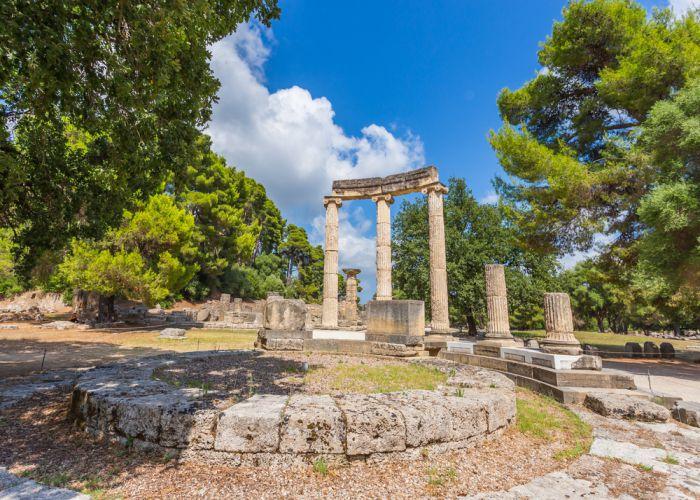
In the temple of Zeus at Olympia, Phidias, the great sculptor of ancient Athens, created a colossal statue of God out of gold and ivory.
The statue was of such splendor that it was immediately recognized as one of the Seven Wonders of the Ancient World. Pausanias saw the statue and said:
"The god sits on a throne, and he is made of gold and ivory. On his head lies a garland which is a copy of olive shoots. In his right hand, he carries a Victory, which, like the statue, is of ivory and gold; she wears a ribbon and – on her head – a garland.
In the left hand of the god is a scepter, ornamented with every kind of metal, and the bird sitting on the scepter is the eagle. The sandals also of the god are of gold, as is likewise his robe. On the robe are embroidered figures of animals and the flowers of the lily." - Pausanias, 5.11.1.
After the ban of the old religion by Emperor Theodosius in 393 AD, the statue was relocated to Constantinople, and it was placed in the palace of Lausus, along with several other masterpieces of the ancient world. Unfortunately, due to a catastrophic fire, the statue was destroyed.
Final Thoughts
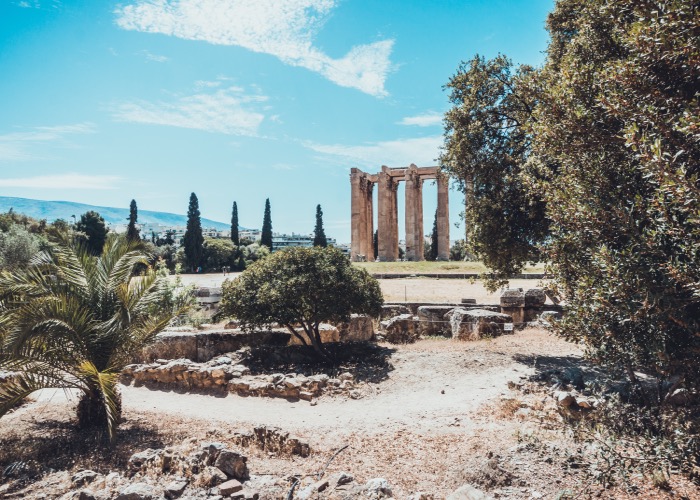 The ancient site of Olympia - credits: Wondervisuals/Shutterstock.com
The ancient site of Olympia - credits: Wondervisuals/Shutterstock.com
From the founding myths to the spectacular statue of Zeus, it is certain that Olympia was indeed a sight to behold! Perhaps the most important sanctuary of ancient Greece, the ideas and values it bore still remain a beacon for humanity.
Plan your own trip to Olympia, or perhaps check out one of our Greece tours. You might even get the chance to attend the Olympia international film festival and get insight into the local culture of today.





